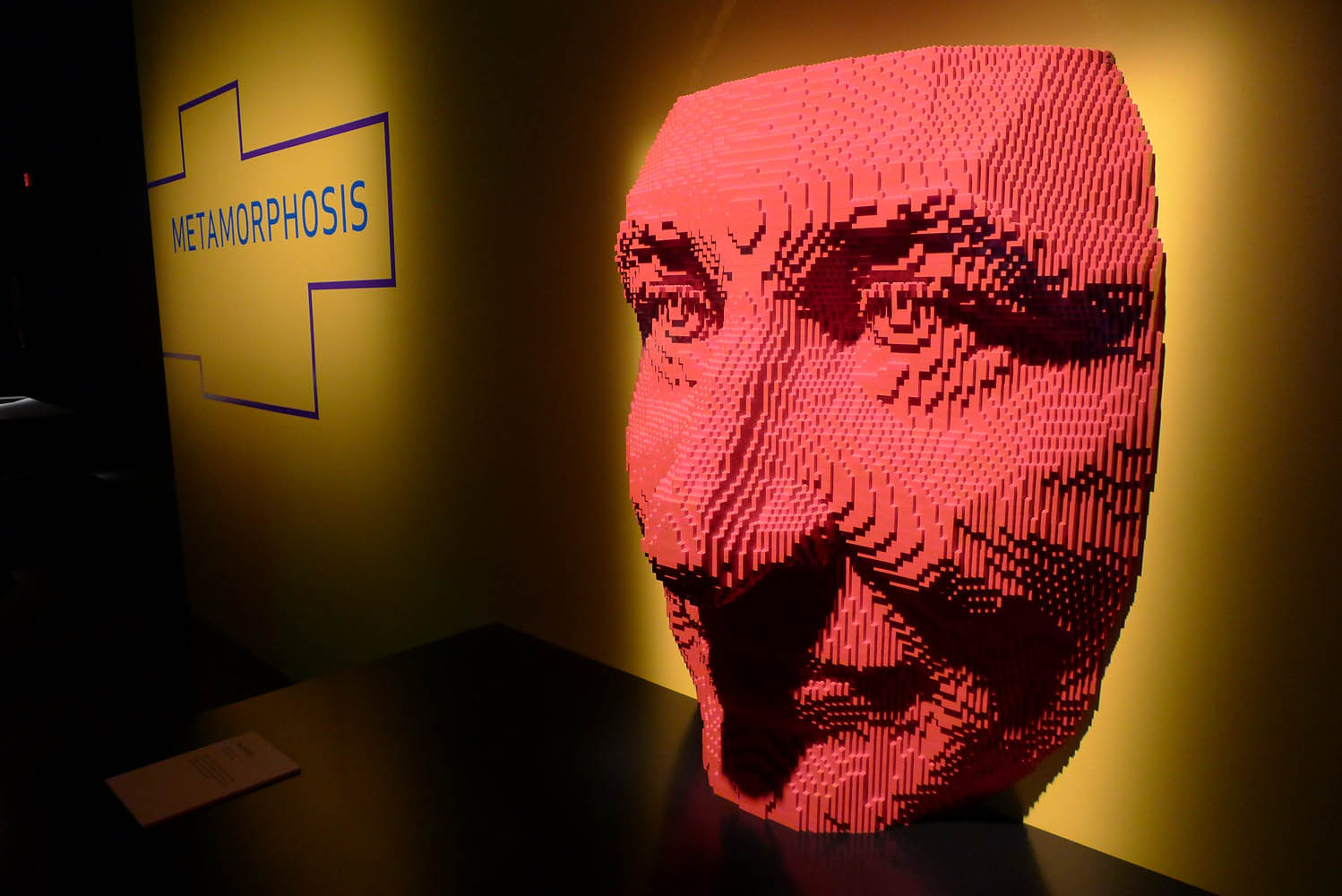
After work, I headed to the Discovery museum at Times Square with Dave – the biggest Lego geek I’ve ever met – for an art exhibit of works made entirely from the teeny plastic bricks.
The Art of the Brick is showcasing the handiwork of Nathan Sawaya until next year. Sawaya is a New York-based artist and famed for creating some of the largest, most inventive Lego sculptures – some commissioned by celebrities or presented to presidents. Several of the sculptures took him months to create and featured as many as 80,000 meticulously placed blocks.
To be honest, before we went, I didn’t really know how much of a viable art form it was. I knew it’d be cool to see, but I also thought it was almost a cheat to make art this way.
But of course, I got there and loved it. It was just so fun. And Dave was pretty much hopping with excitement.
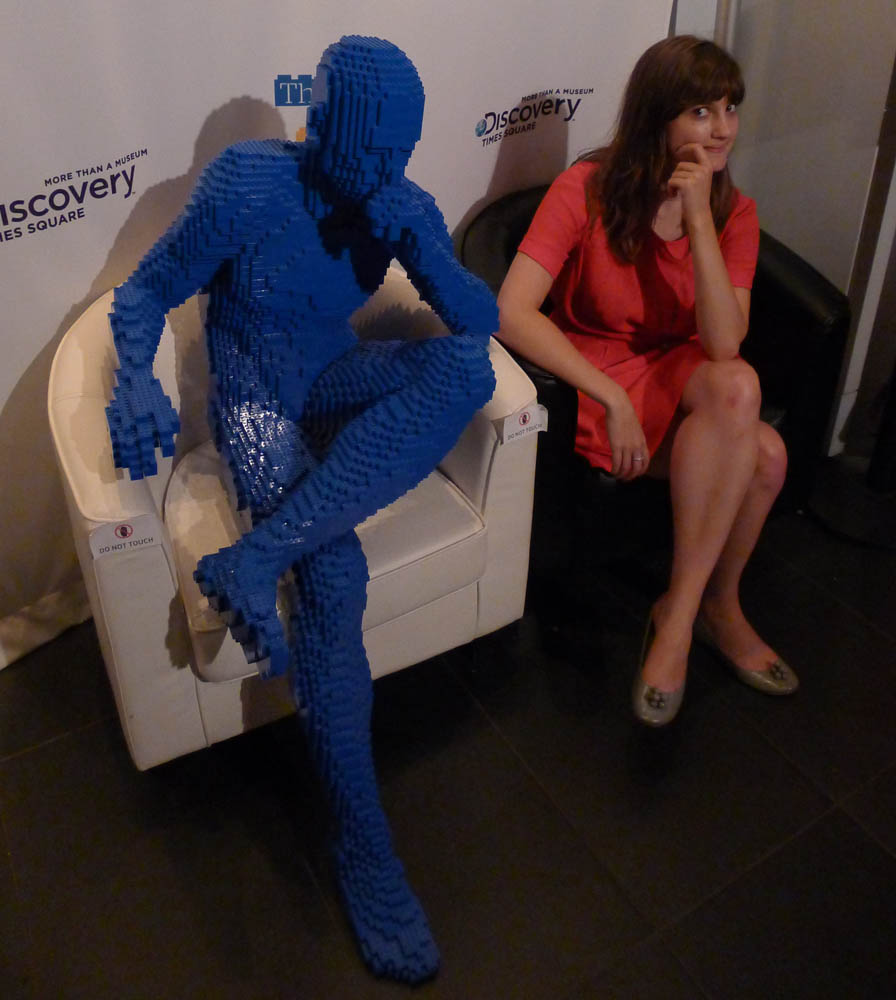
Aside from the sheer scale of some of the pieces, one thing that blew my mind was how precise he was with the blocks. For example, the first room featured pieces that replicated famous artworks – DaVinci, Malevich, Van Gogh. And while they looked pretty blocky close up, when you stood back, you could see how he’d placed them so perfectly to create an accurate version – albeit a slightly blurred one. (We found that squinting a little helped).
Check out this Rembrandt self-portrait, for example.
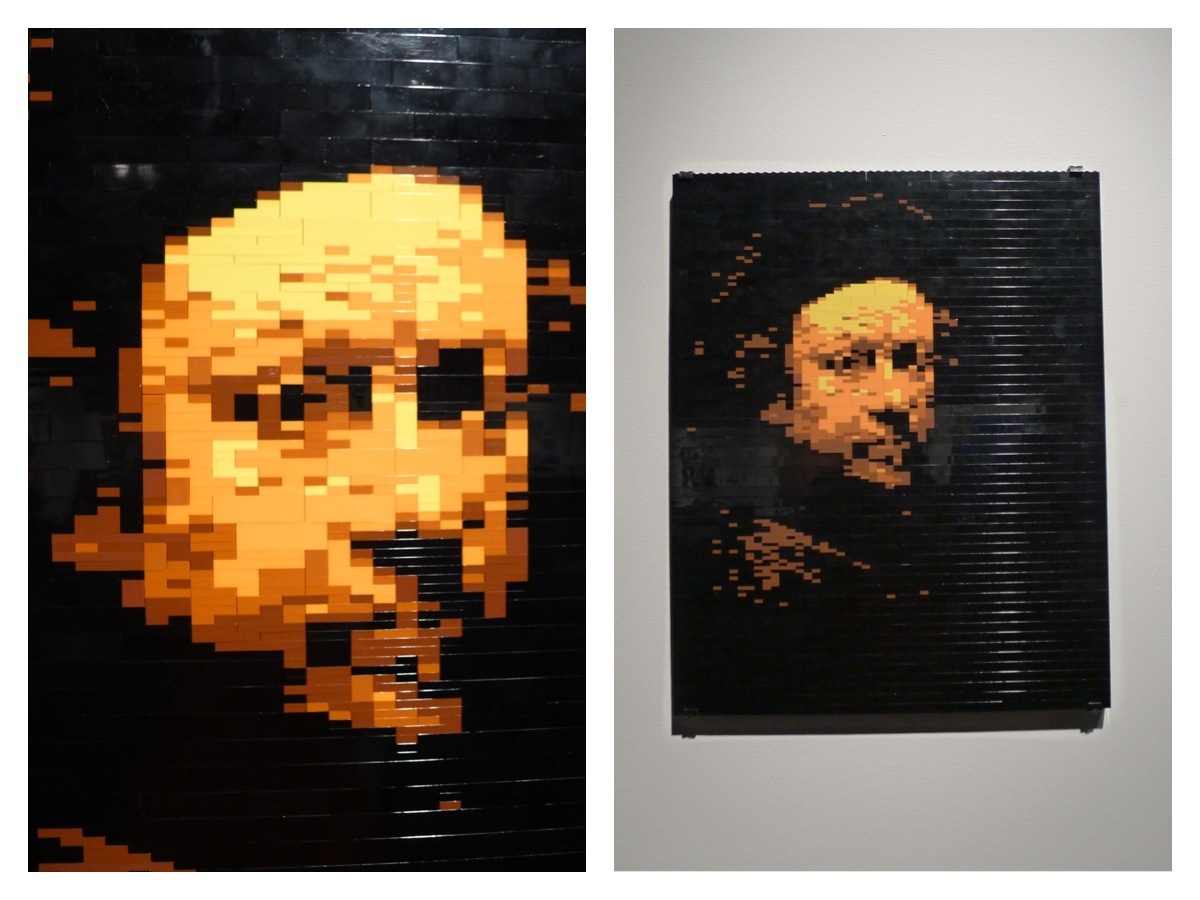
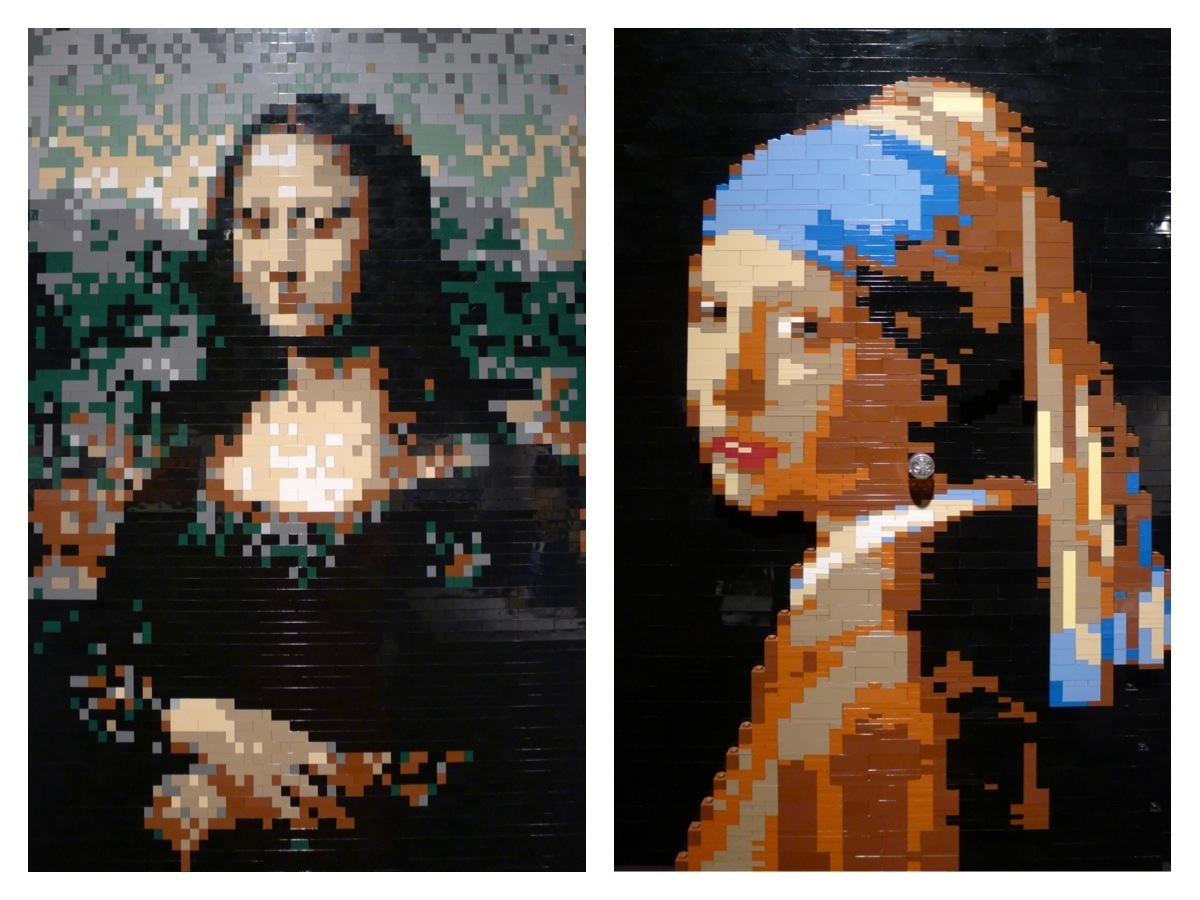
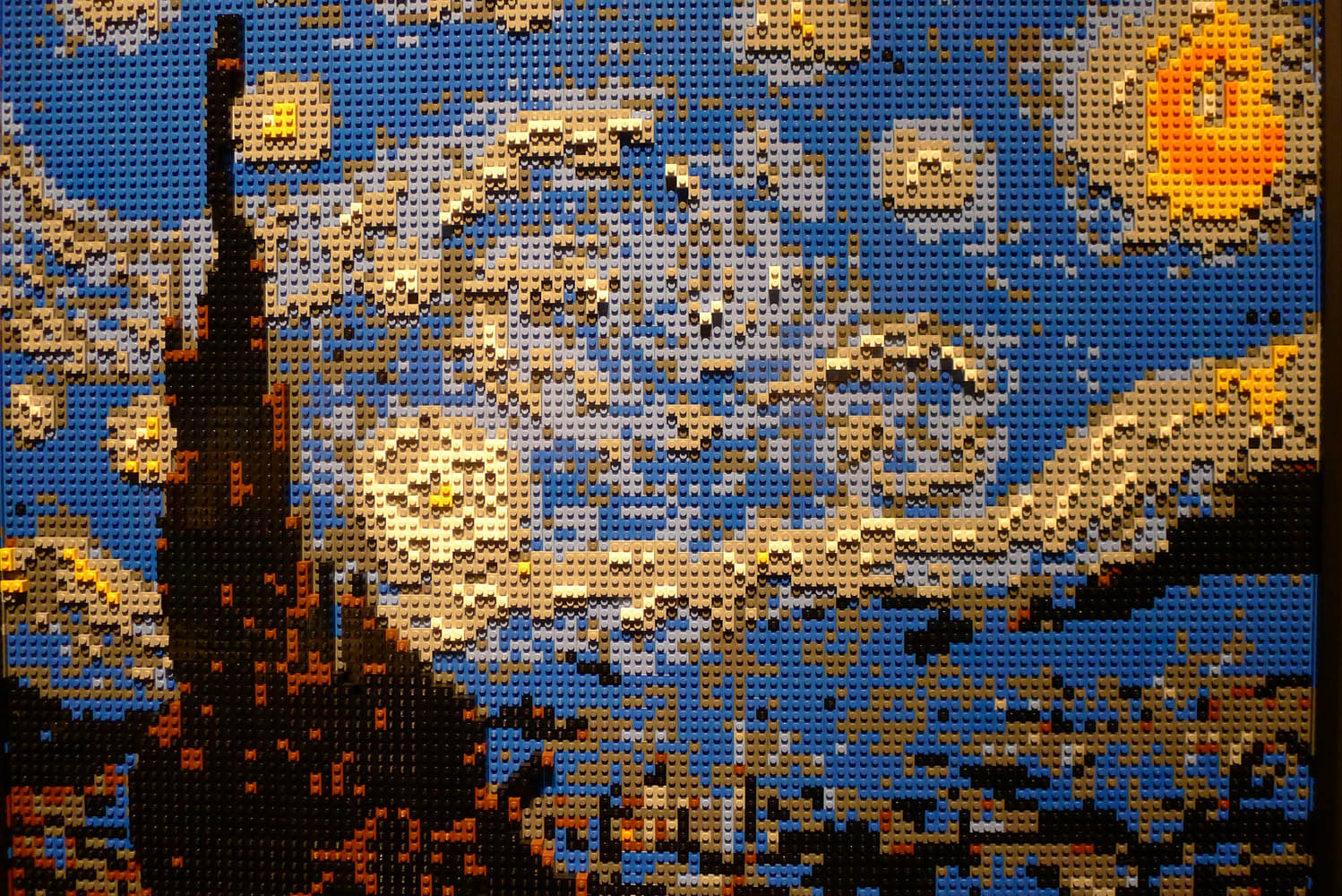
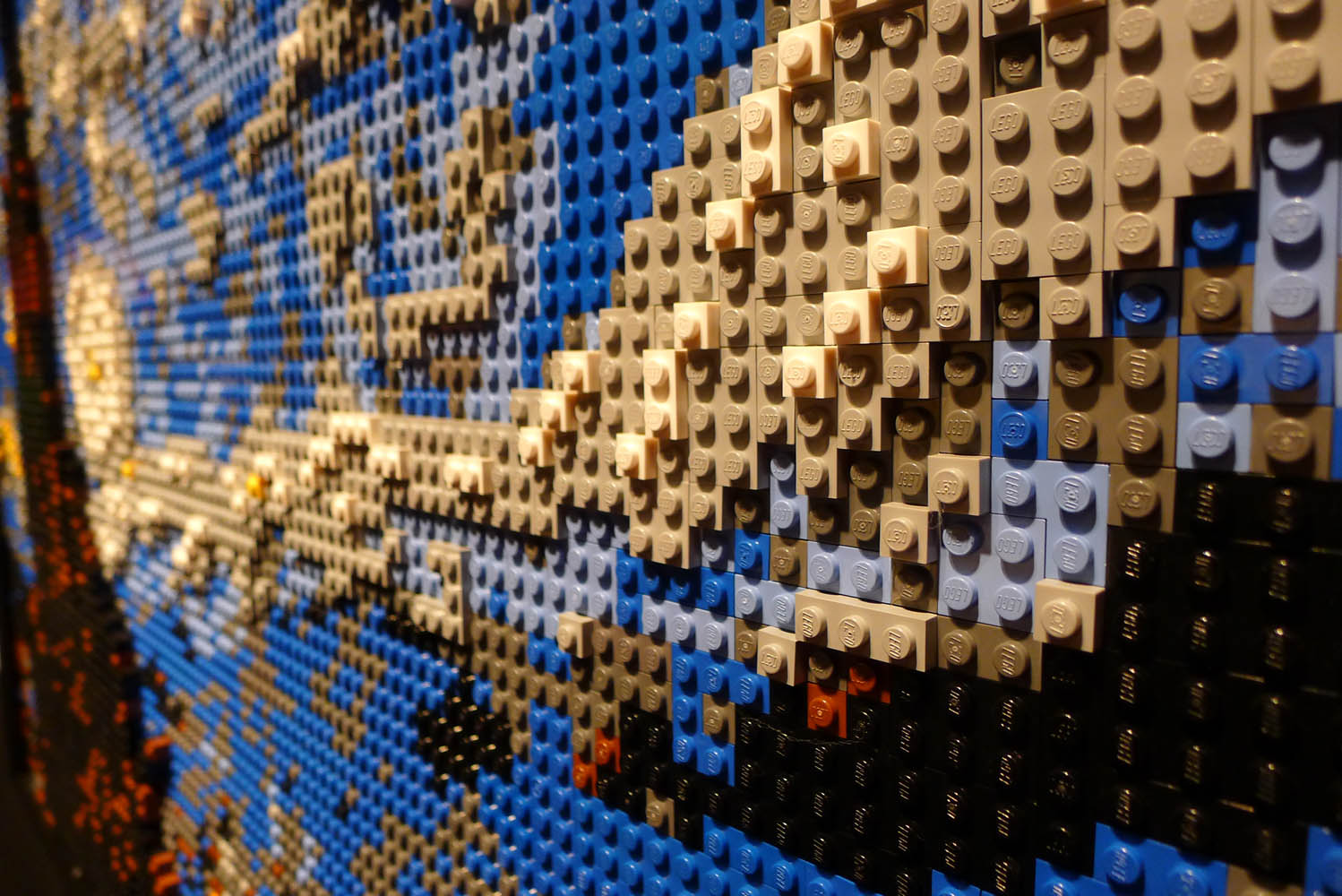
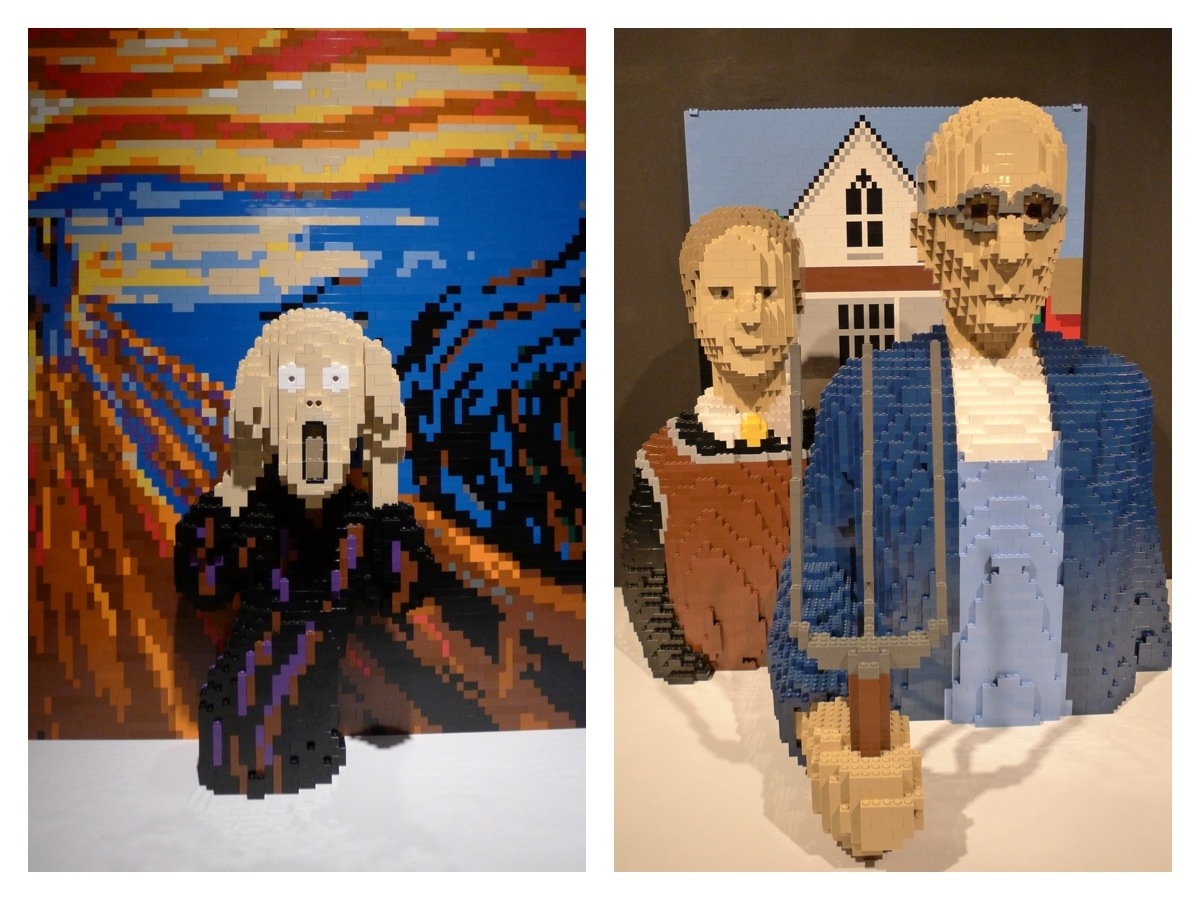
The next room drew on history far more ancient; here, he replicated classical statues and Egyptian icons. They were also so convincing – but I didn’t enjoy the flat bums.
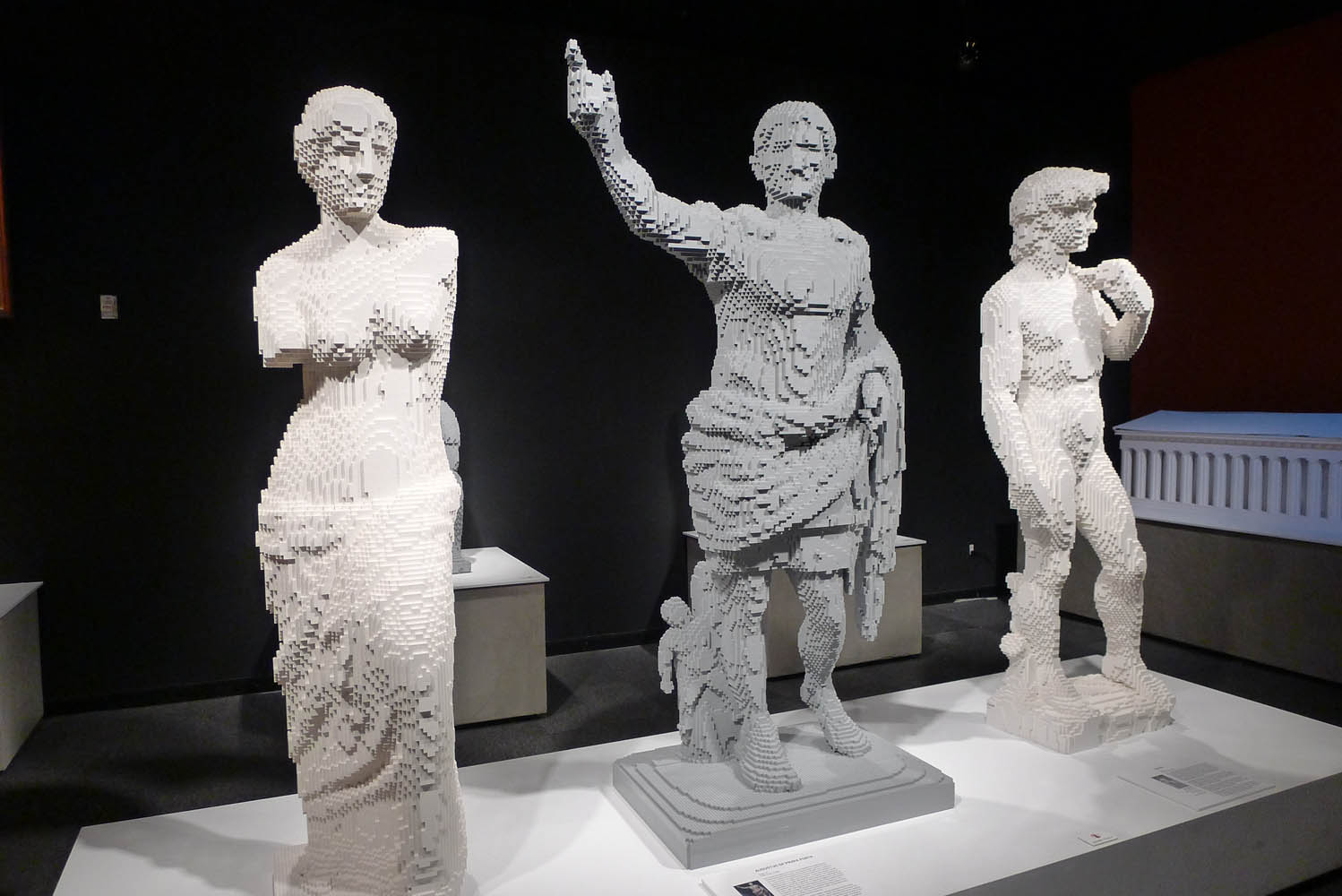
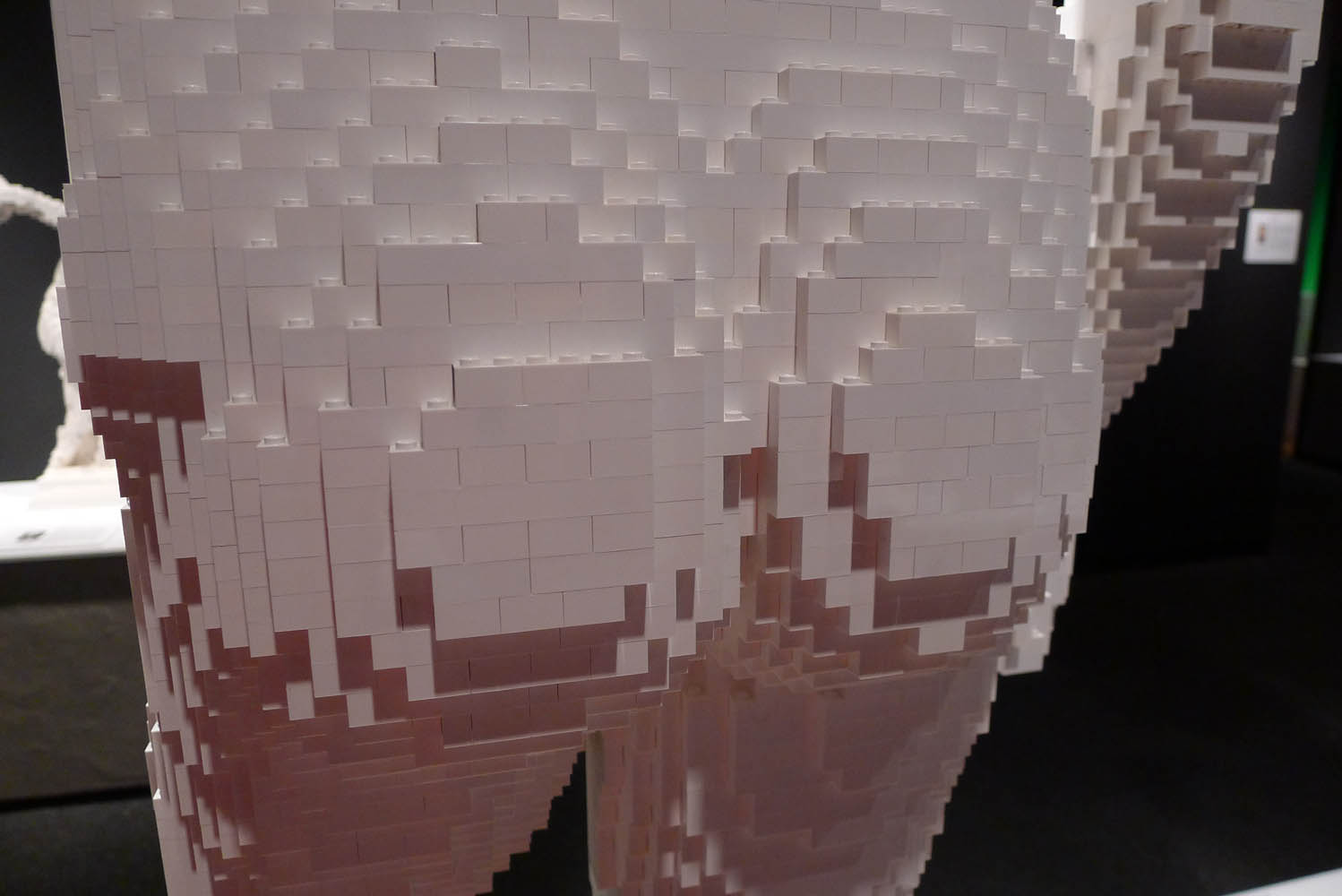
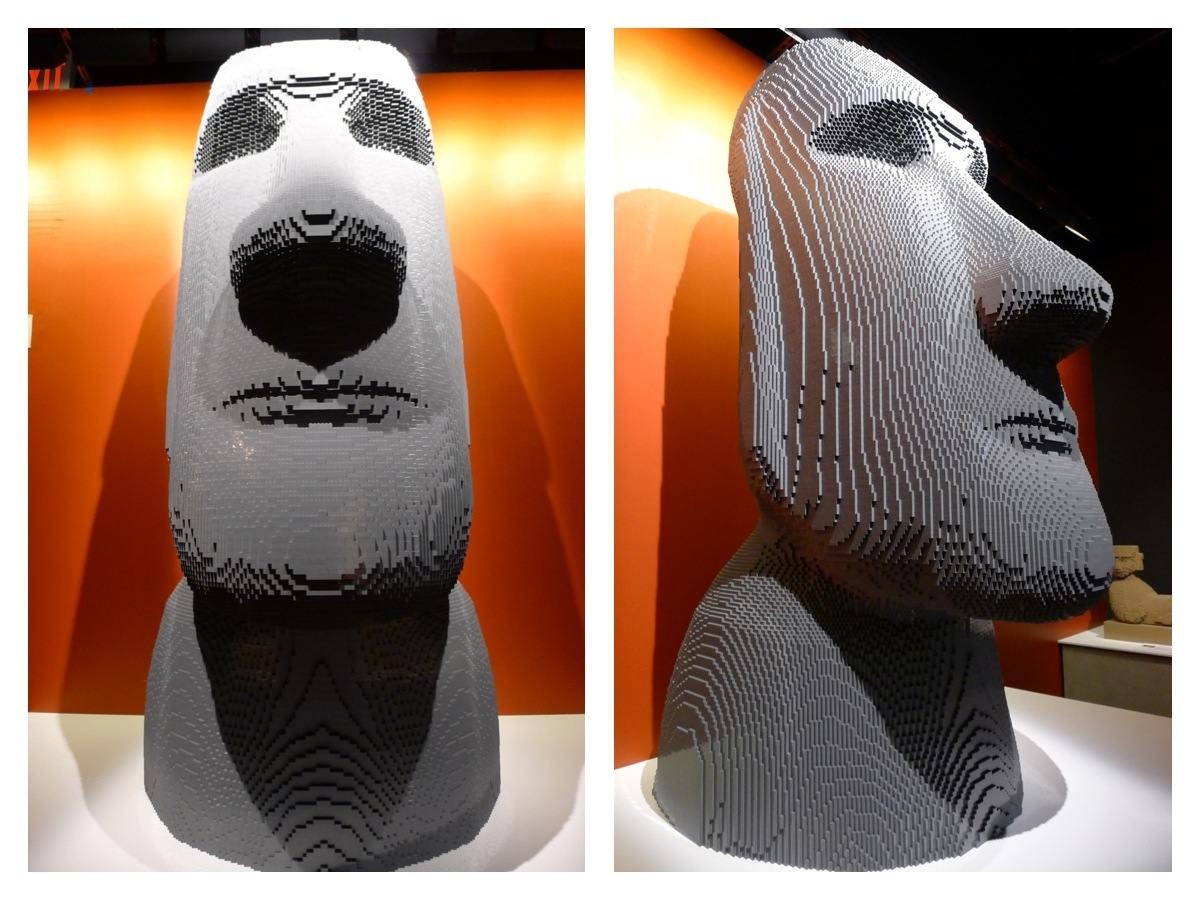
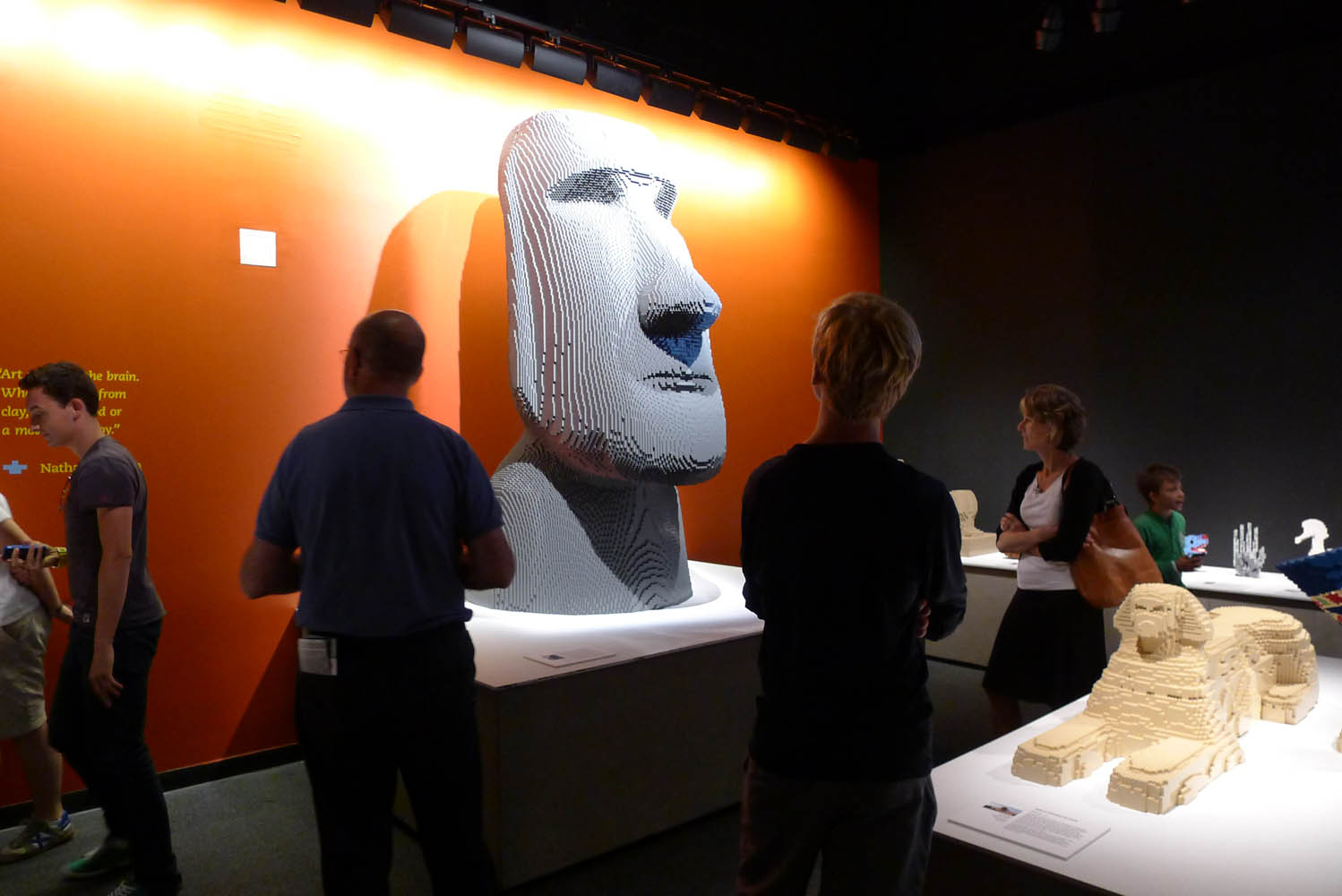
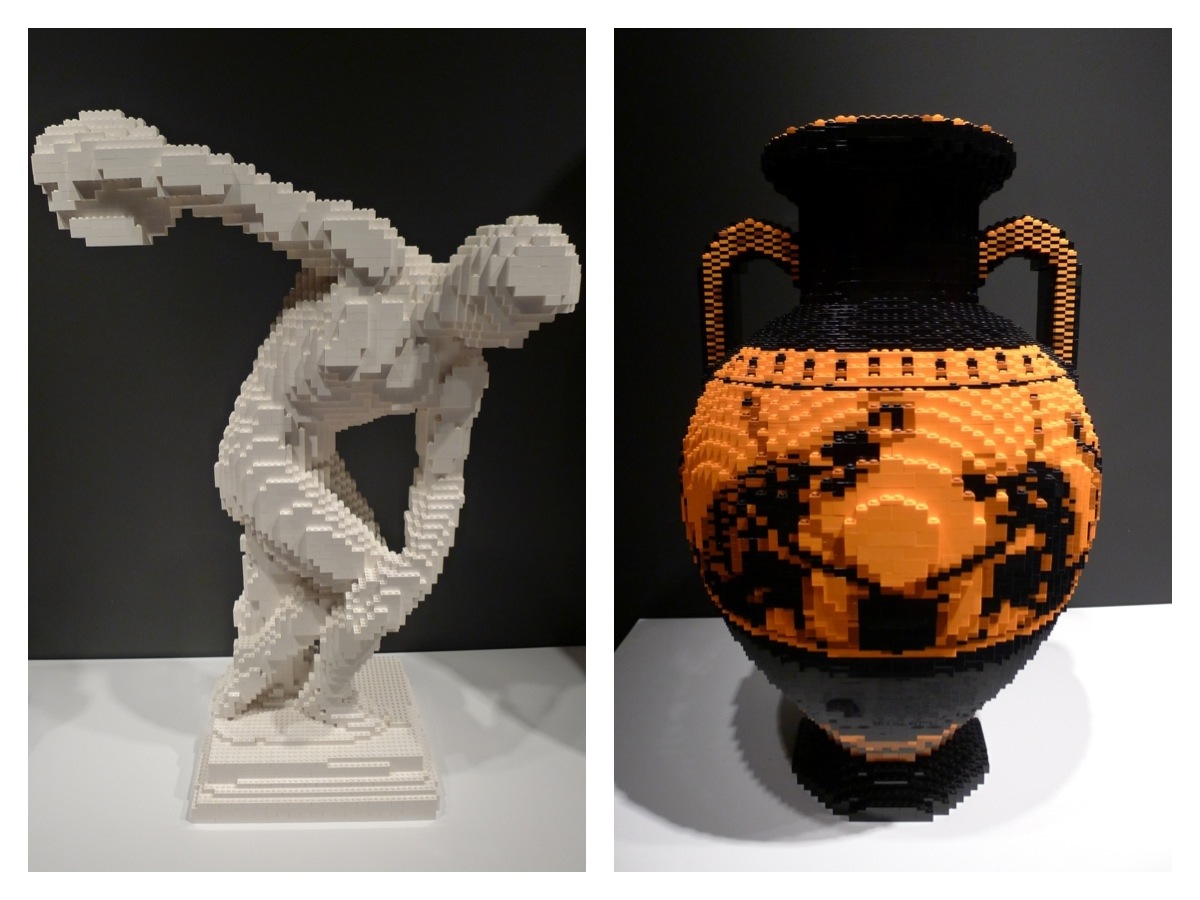
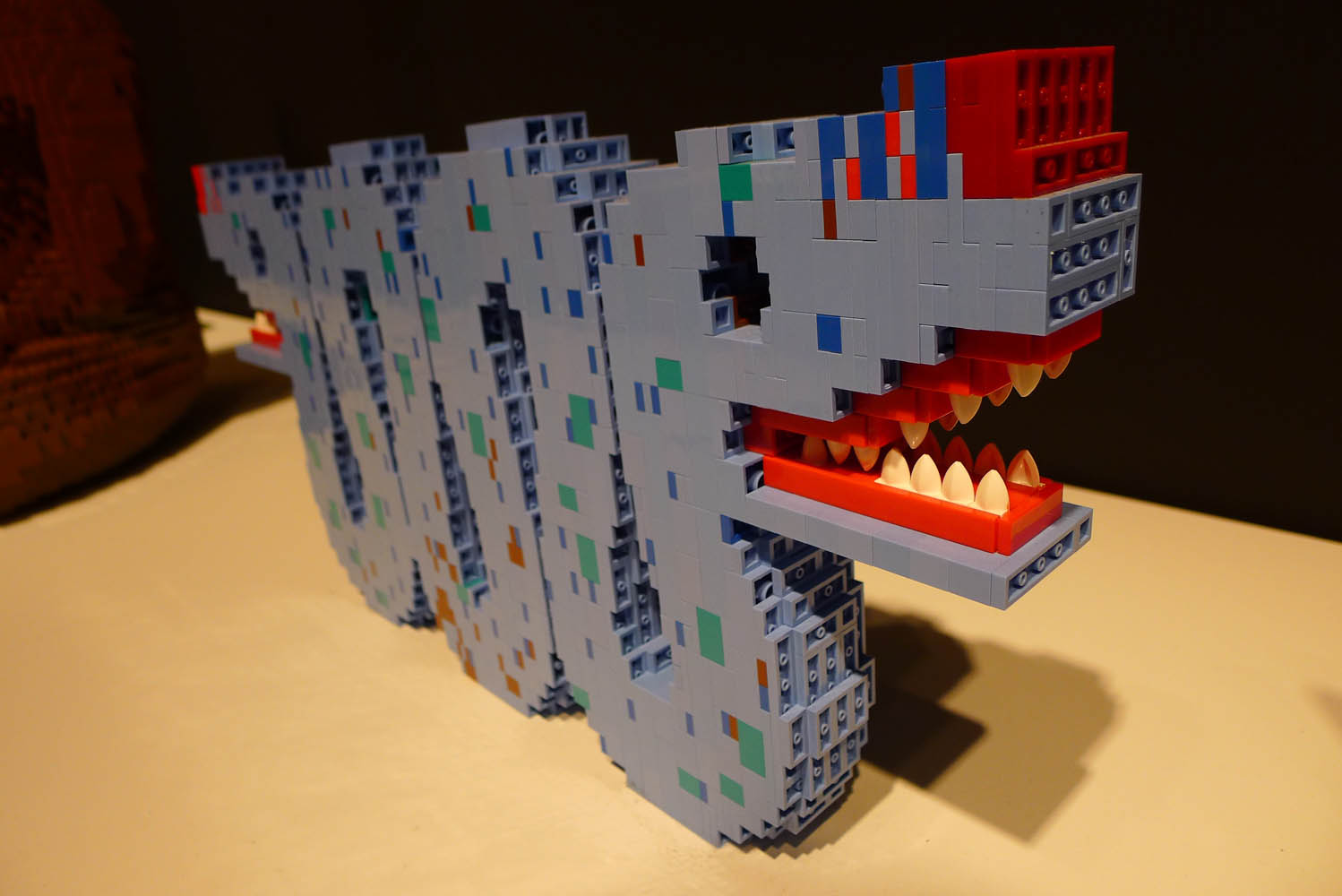
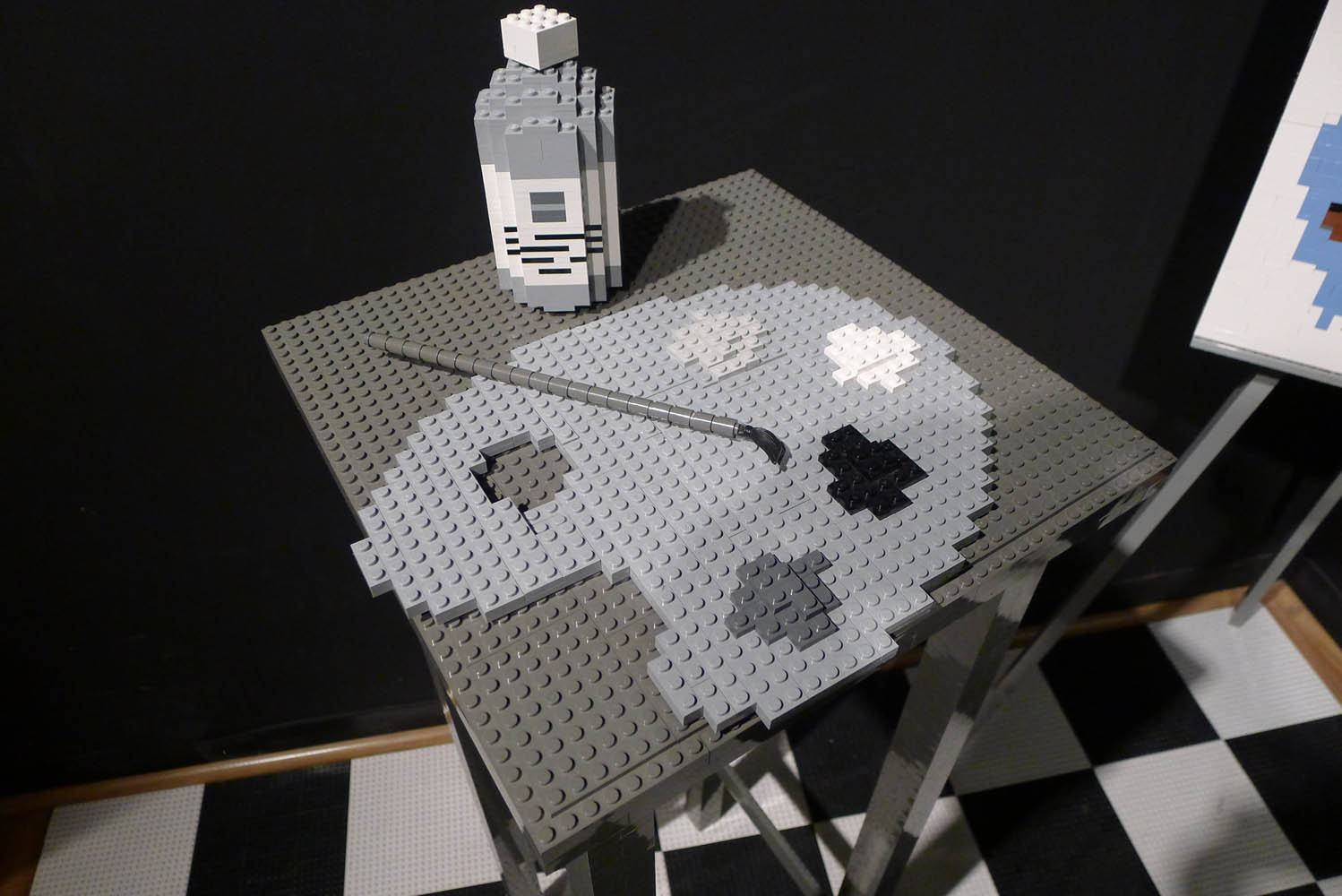
Other rooms presented Sawaya’s original designs but some of the works showed the limitations of the Lego. He avoided smoother curves and seemed to stick to figures, which were all very crude.
It also would have been good to have a little more information on how exactly Sawaya built the sculptures. Dave wondered if maybe he used some sort of computer program to plan the 3D structures before he got to work. A video showed him gluing each piece down, so there must be some planning. Unless he has just made so many now that he just knows how the structure will work out.
Despite a couple of reservations, I couldn’t help gasping as we turned each corner and I saw another room filled with brightly coloured pieces. In particular, this huge dinosaur skeleton made of 80,020 blocks:
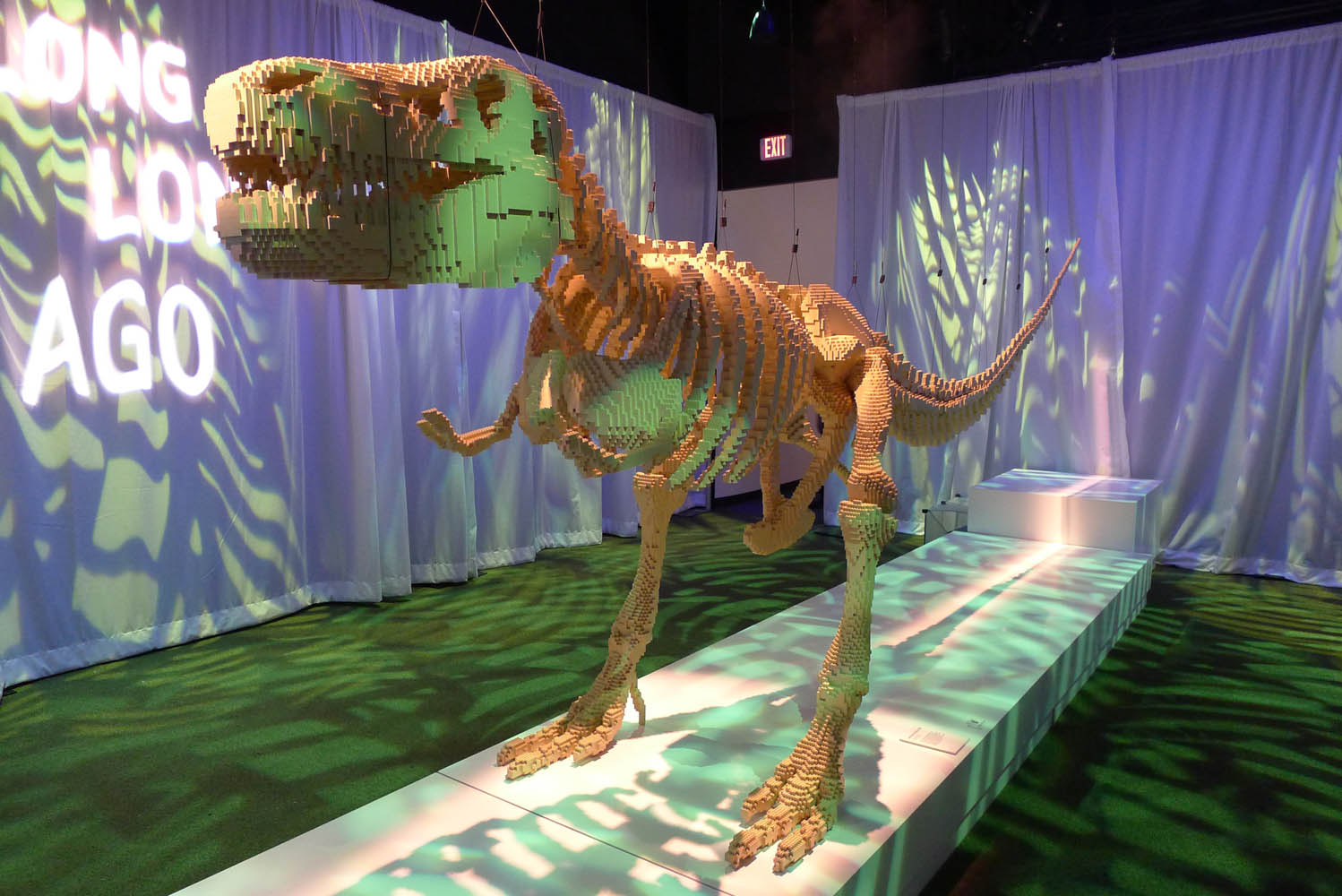
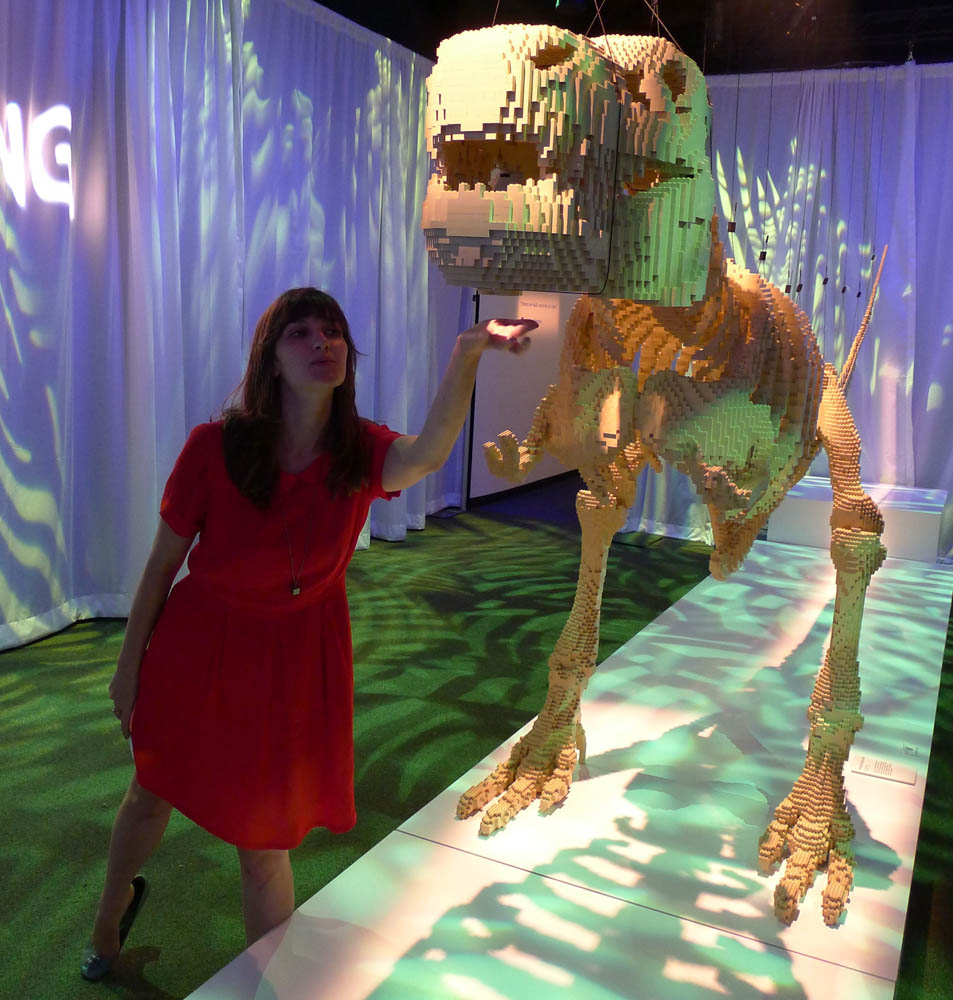
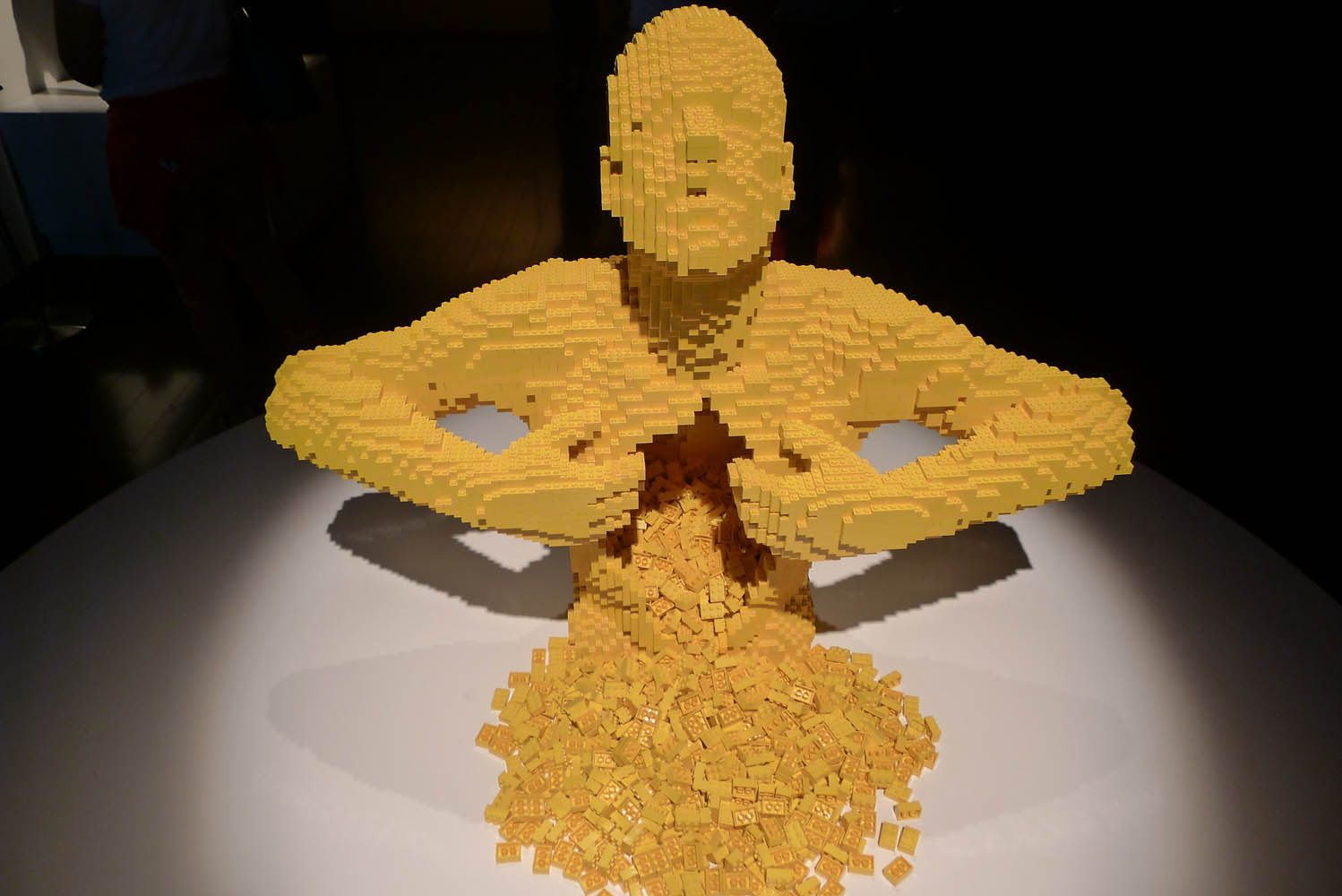
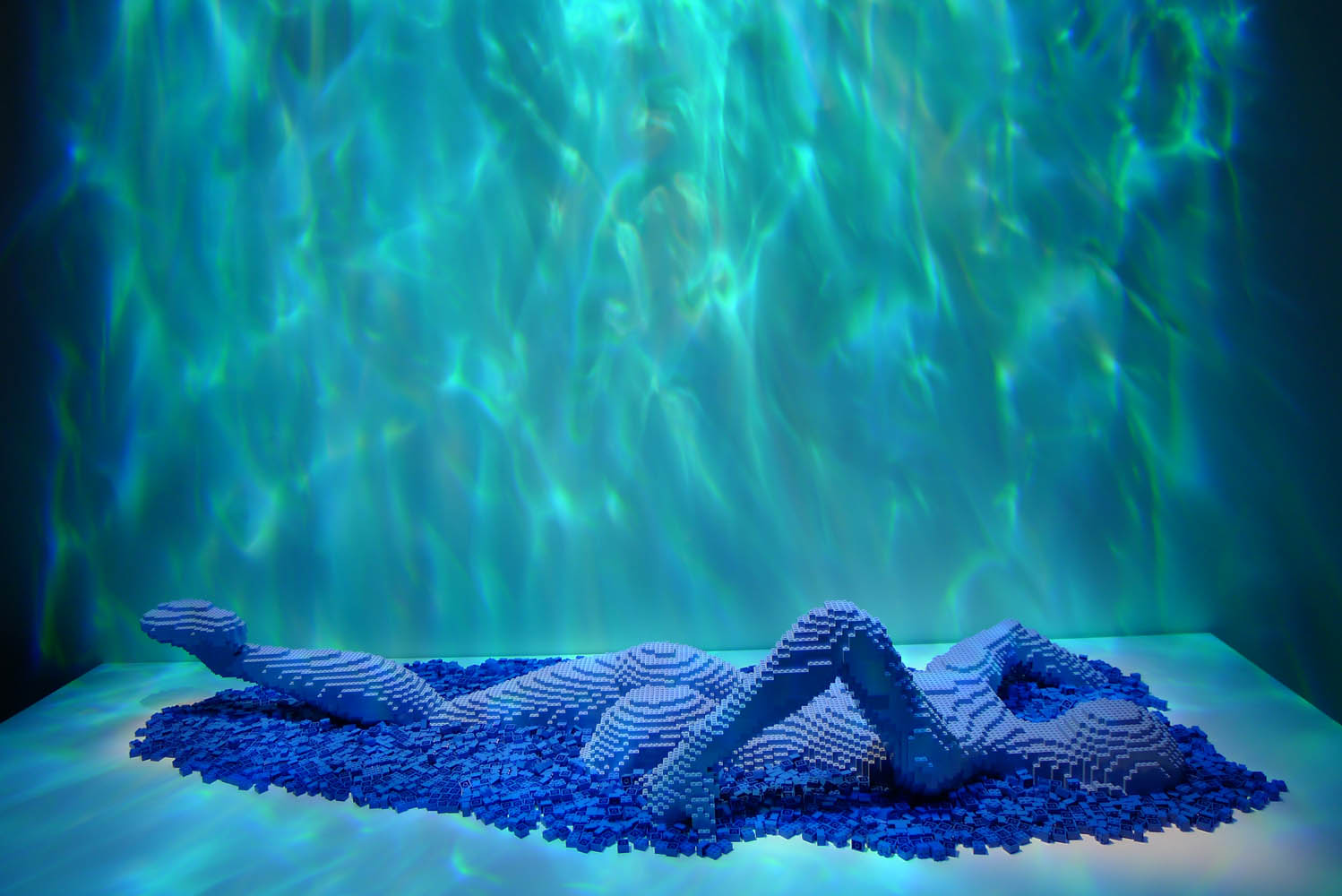
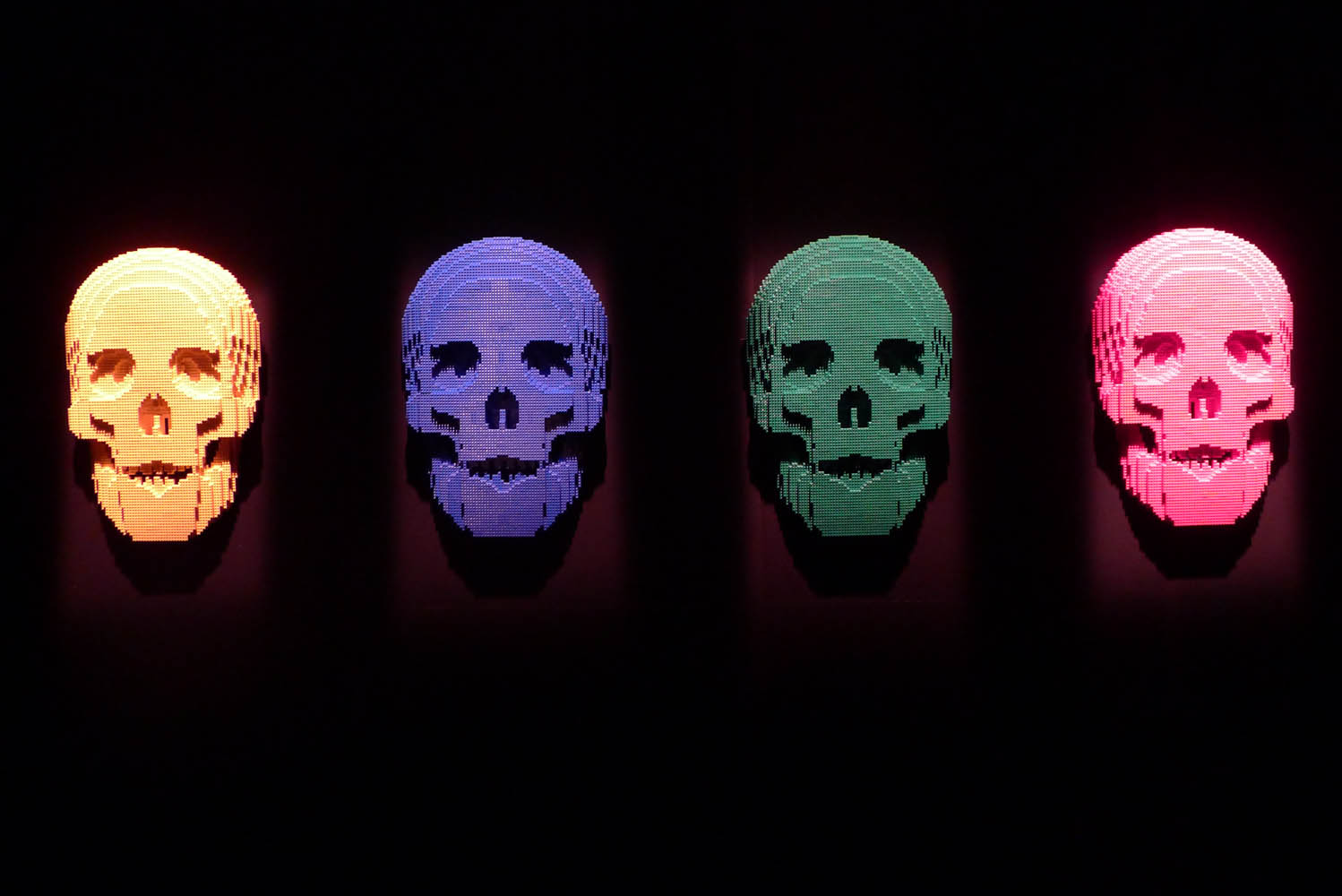
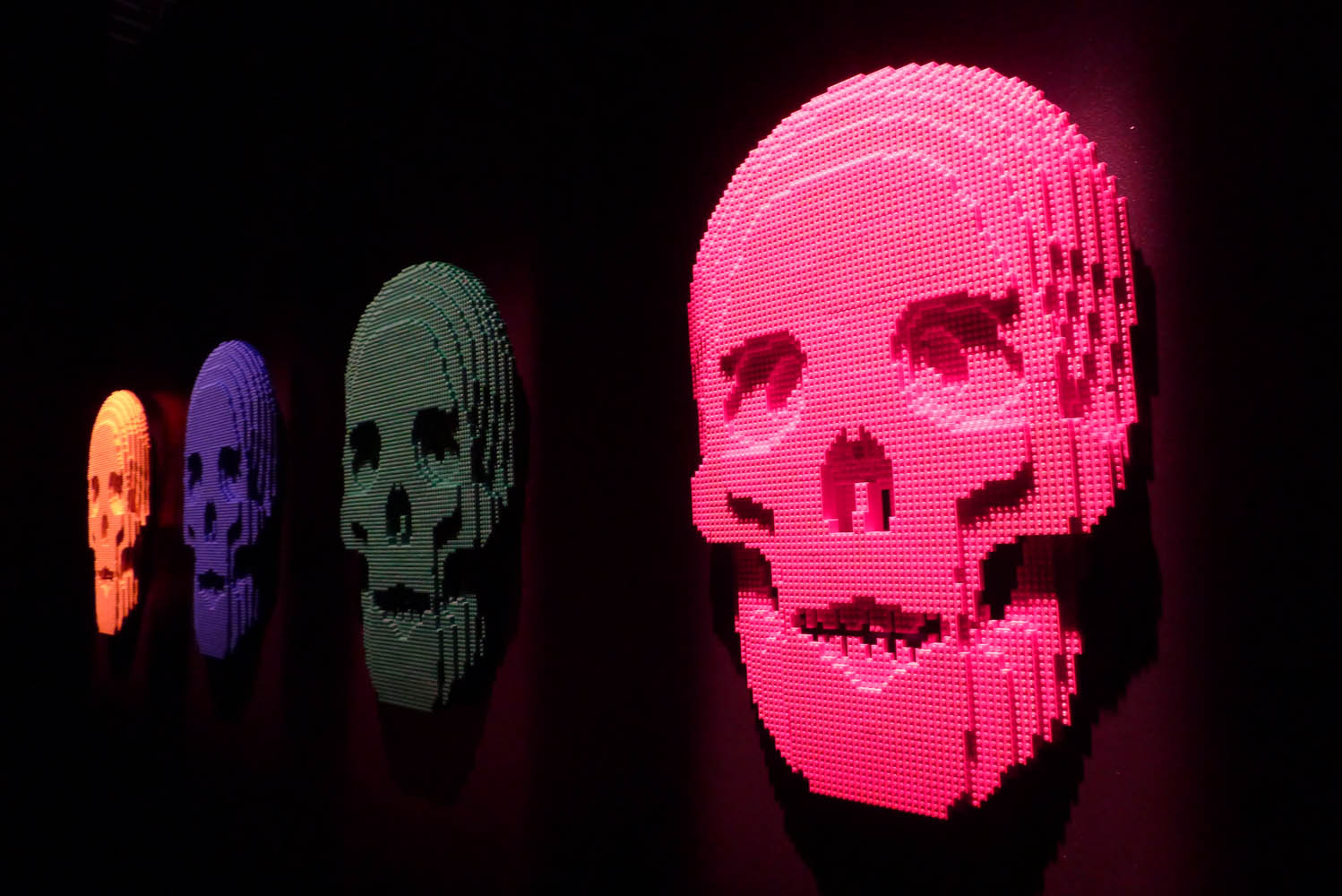
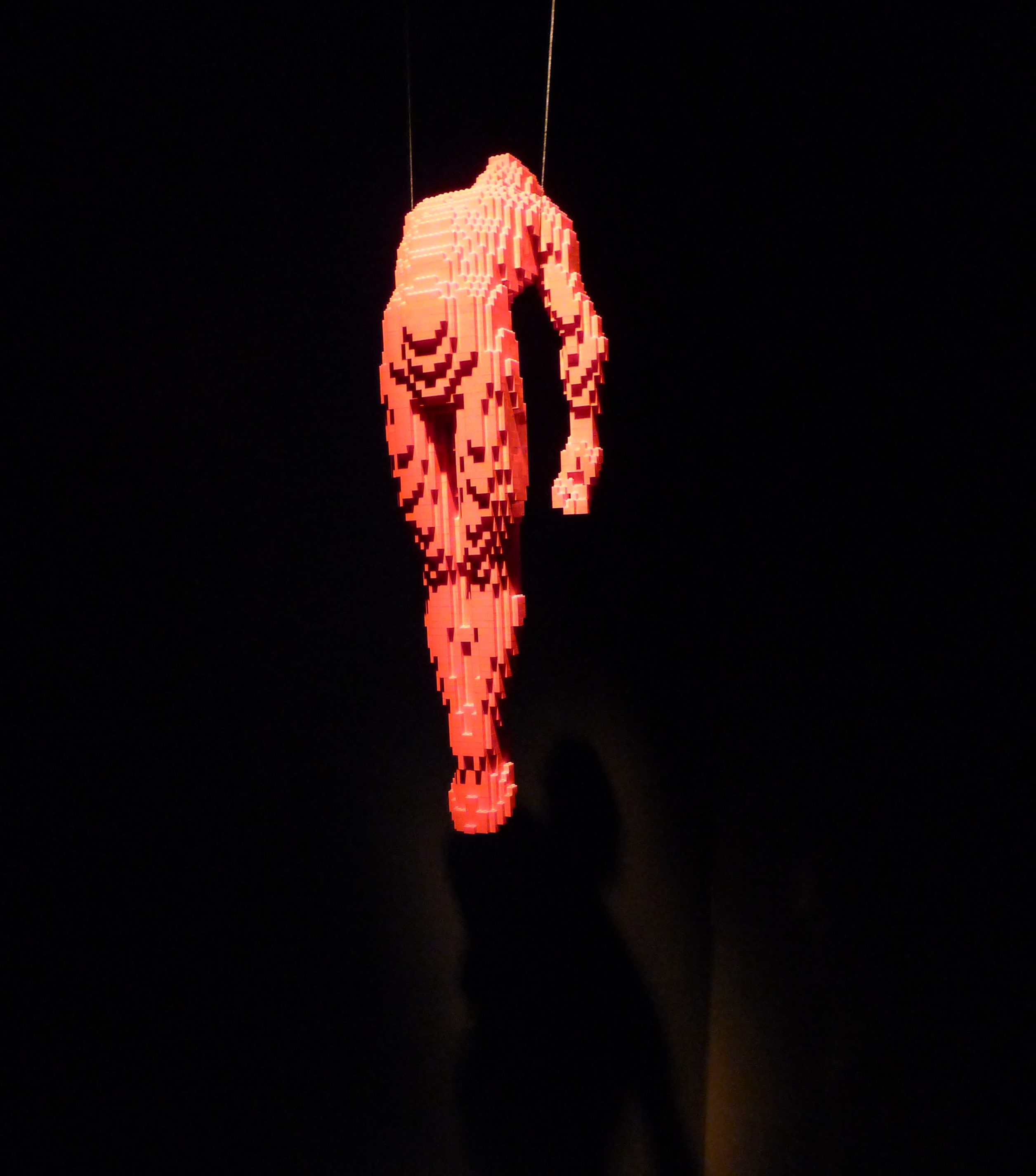
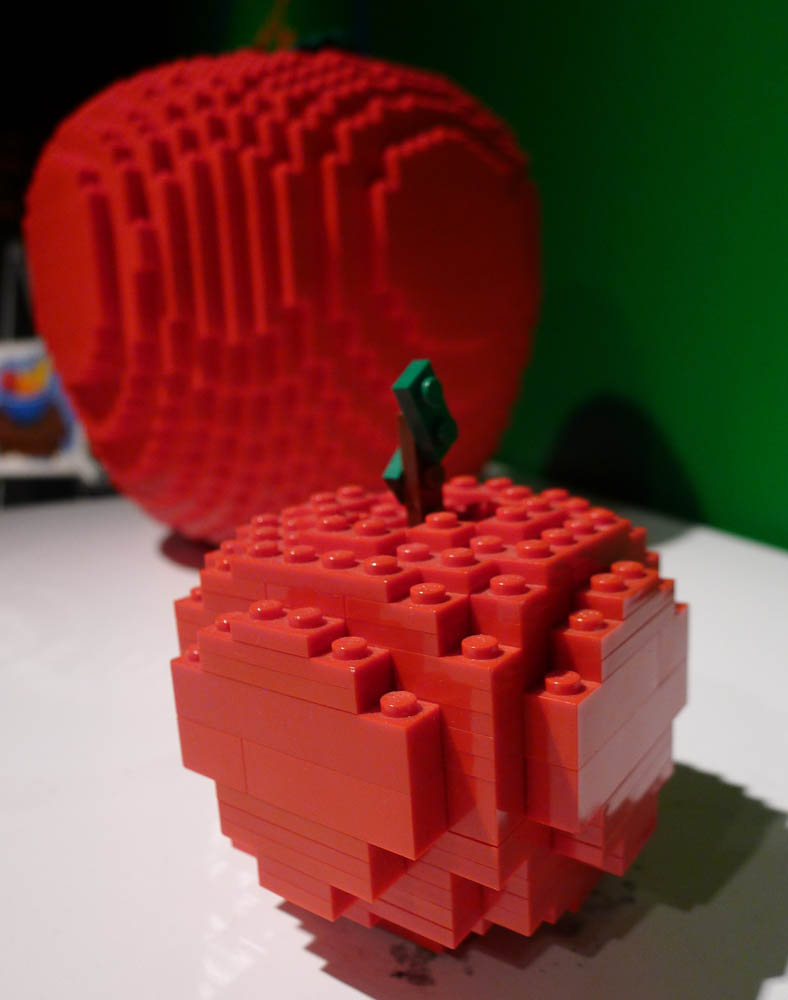
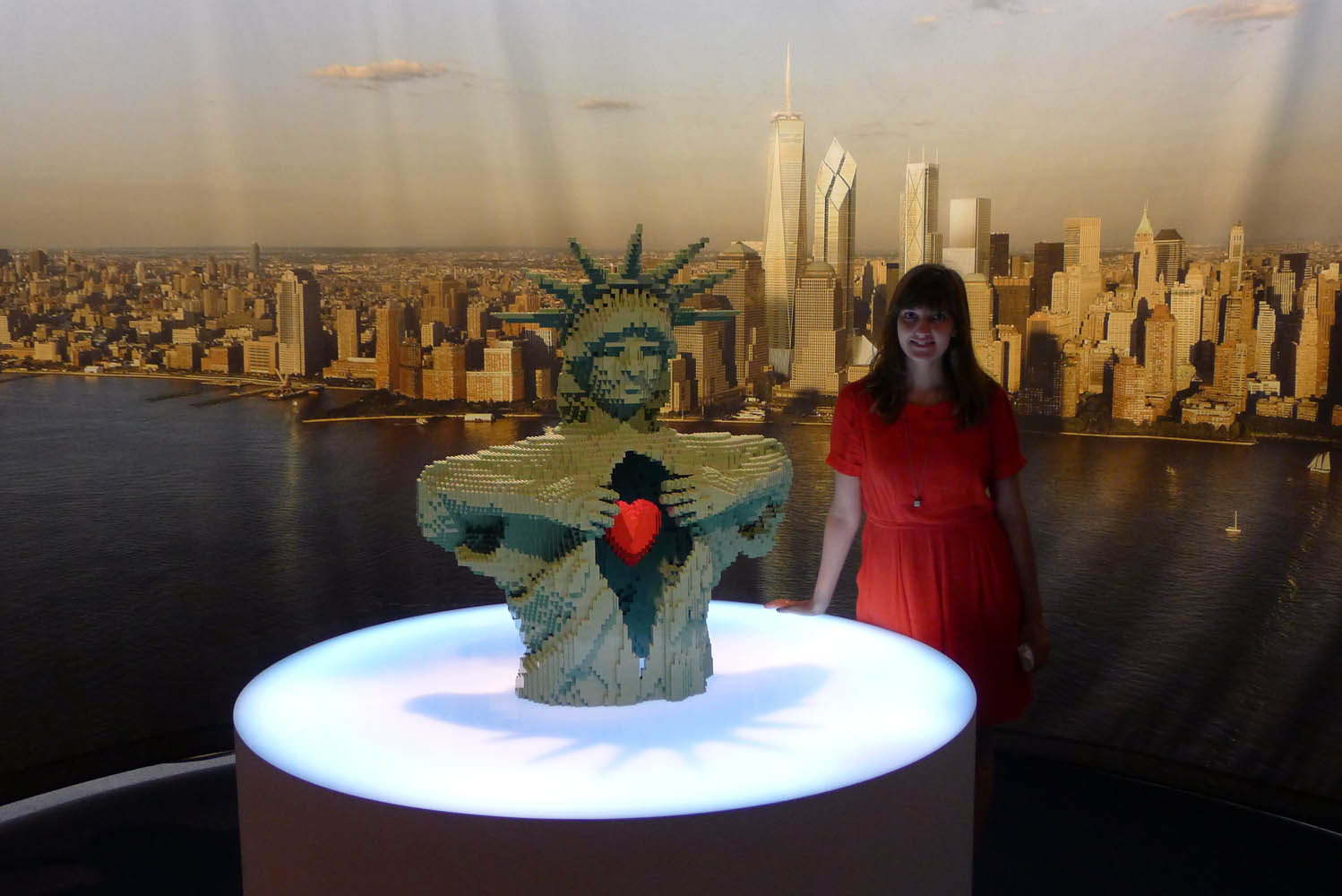
At the end, we got to create our own Lego art by adding a named block to hundreds that had been placed before us.
This was a nice touch by the museum – and a good reminder of Sawaya’s point that every kid might not be able to afford a fancy easel, but many will come across a Lego block in their home or school… and can create art.
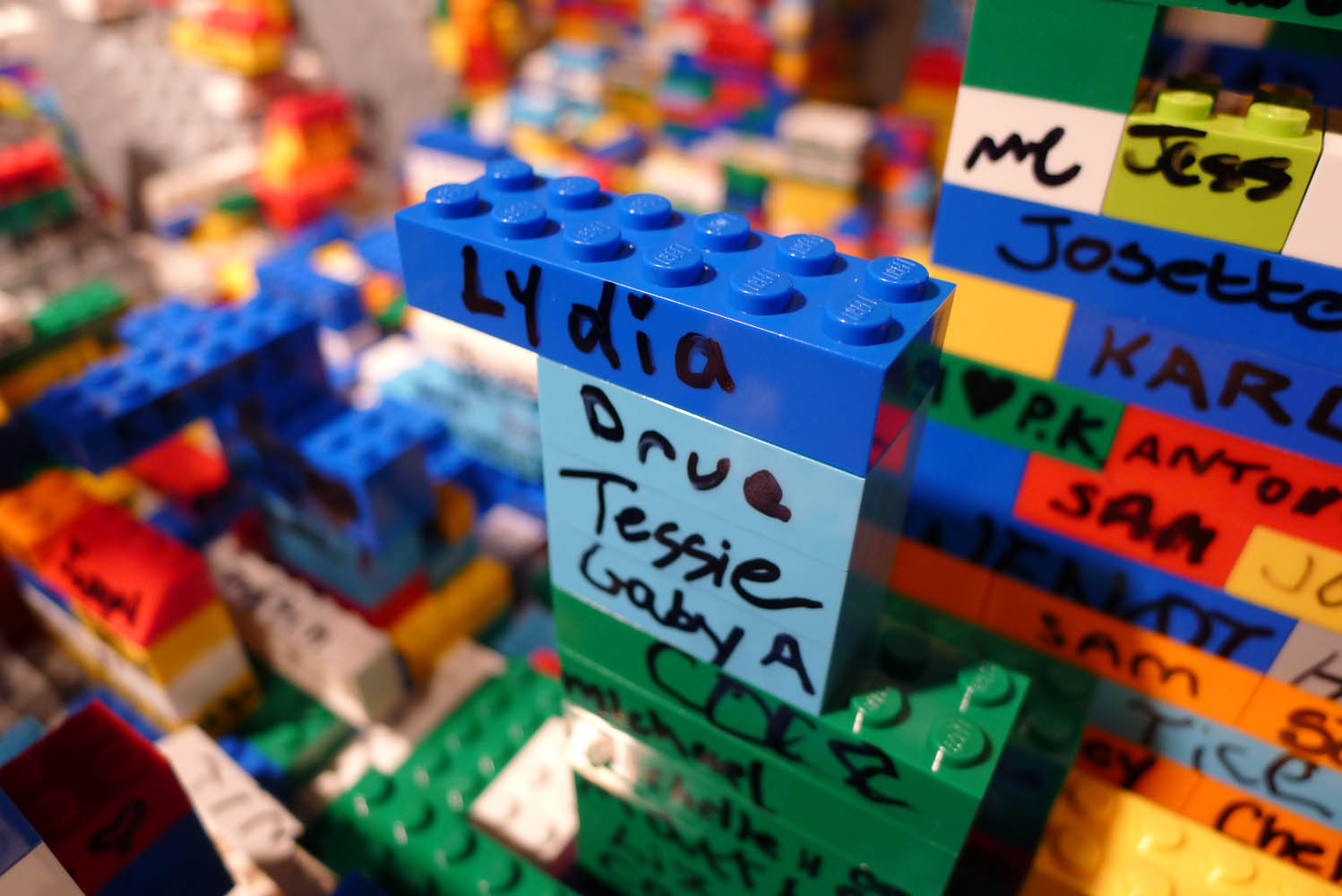
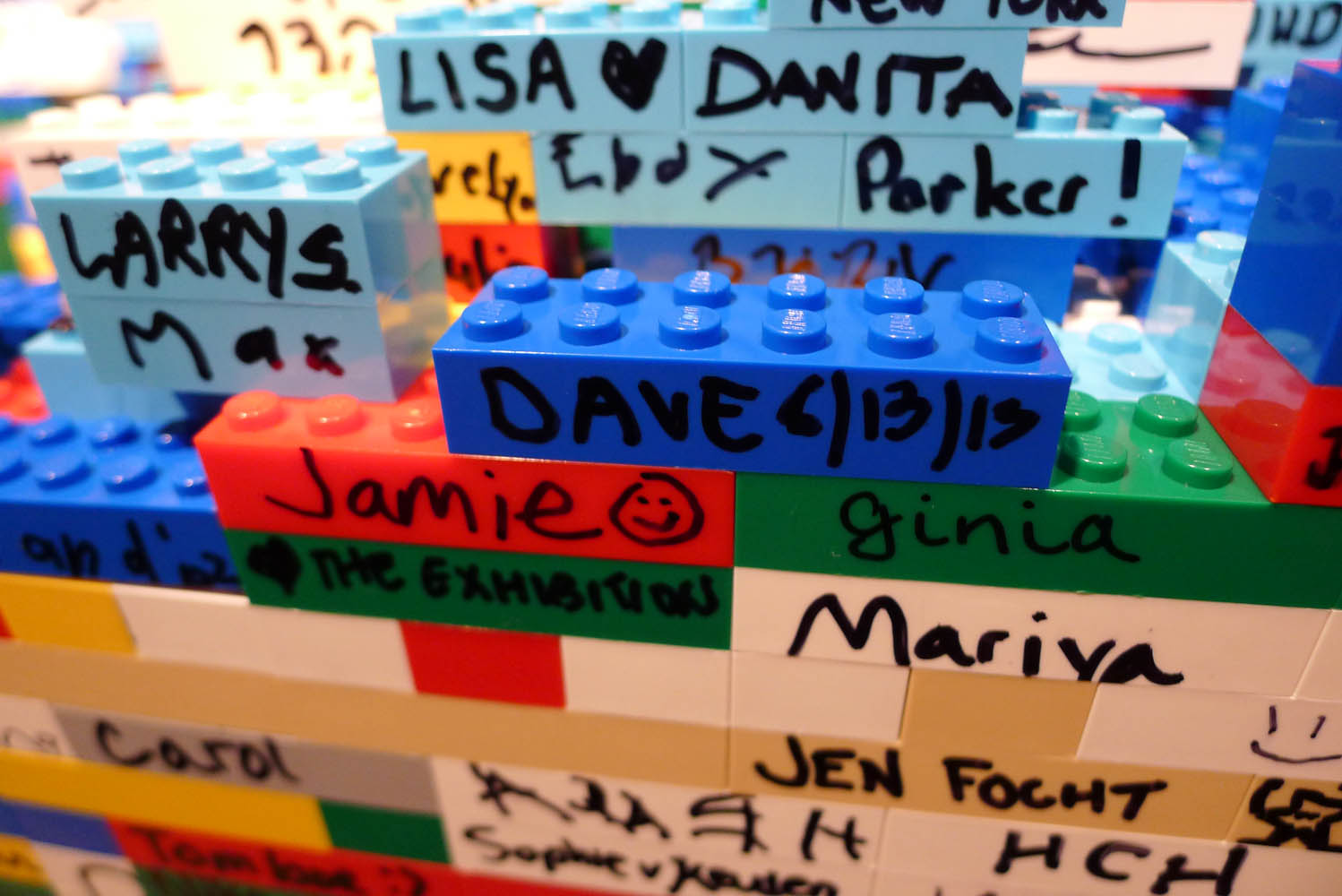
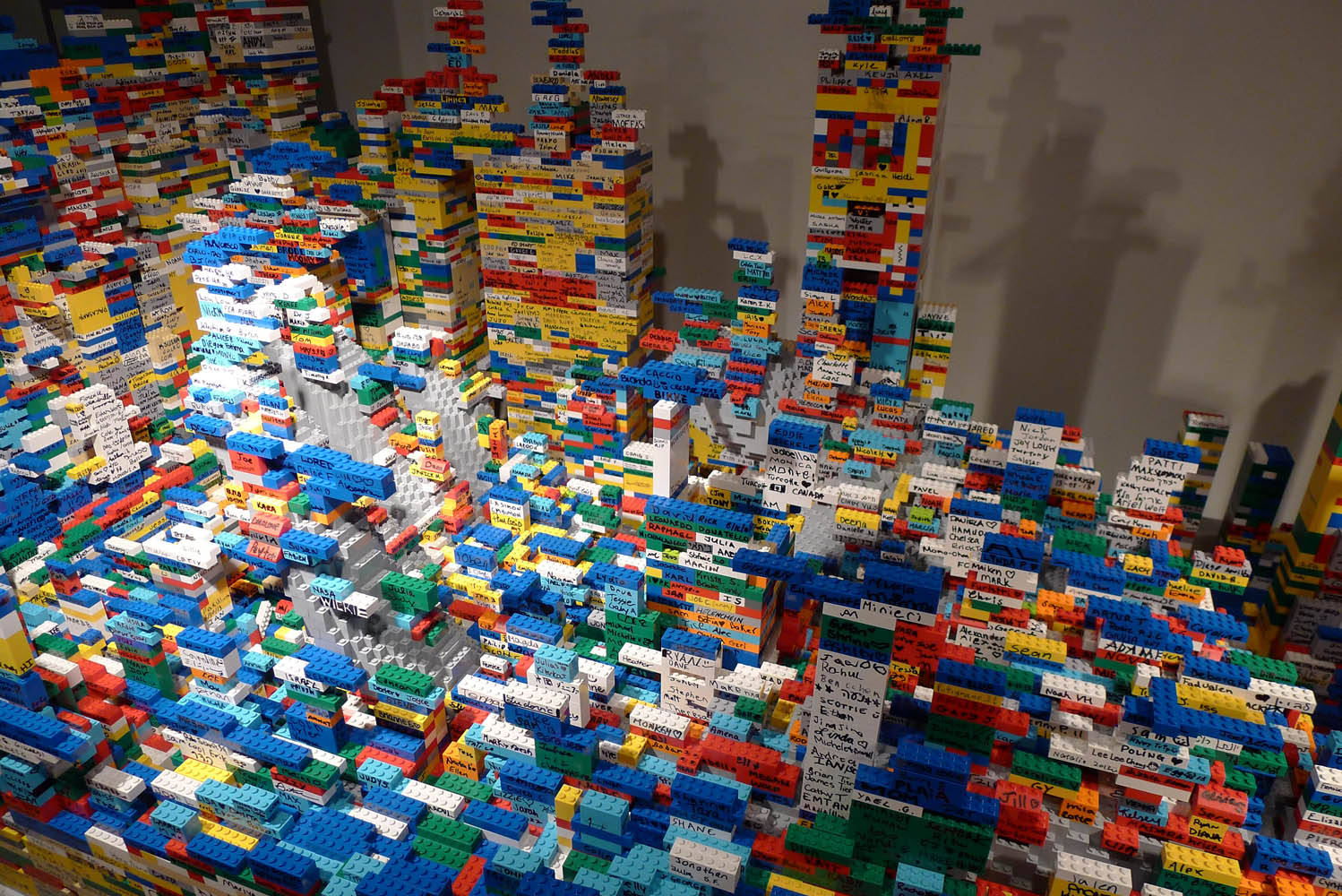
I’d not been to this museum before, and although I usually avoid Times Square except for emergencies, it seemed to have some really off-beat, interactive exhibits I’d be keen to visit.
And while the Lego had its limitations as an art medium, this show was definitely a must-see.




Recent Comments